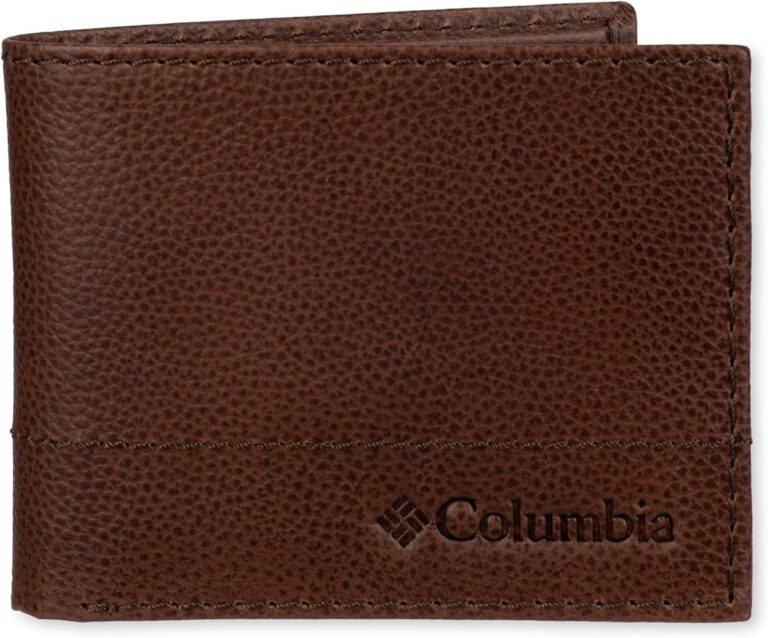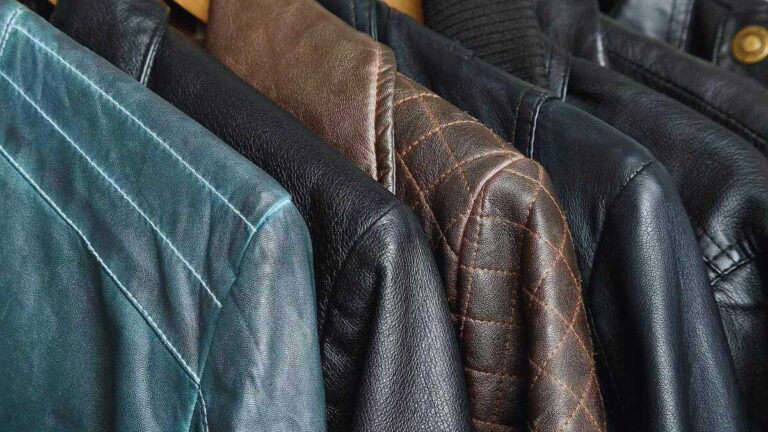Say Goodbye to Grime: Mastering How to Wash Your Leather Bag
Caring for Leather Bags
Proper care is essential to maintain the elegance and longevity of your leather bag. Understanding why and how to care for your leather bags can save you from unnecessary headaches.
Importance of Proper Care
Leather bags require special treatment and maintenance to keep them looking good. Regular care ensures that the leather remains supple and free from cracks. Using simple tools like a soft brush and warm water can help in cleaning without causing damage (Vintage Leather Store). Proper drying and storage are also key aspects of leather care. Avoid excessive sunlight exposure and store your bags in cool, dark areas to maintain their quality (Vintage Leather Store). For those wondering why does leather crack and peel, it’s often due to neglect and improper care.
Types of Leather Bags
Understanding the different types of leather used in bags can help you choose the right cleaning and maintenance methods. Each type of leather has distinct characteristics and care requirements:
| Leather Type | Characteristics | Care Requirements |
|---|---|---|
| Split Grain Leather | Made from the fibrous part of the hide | Requires gentle cleaning and moisturizing |
| Bonded Leather | Made from leather scraps bonded together | Wipe with a damp cloth; avoid harsh chemicals |
| Genuine Leather | Lower-grade leather; marked by imperfections | Clean with a soft cloth and leather conditioner |
| Natural or Full-Grain Leather | High-quality, retains natural imperfections | Use specialized leather cleaners |
| Top-Grain Leather | Sanded to remove imperfections | Requires regular conditioning and protection from scratches |
| Aniline Leather | Dyed without a protective topcoat | Clean gently, avoid water and harsh chemicals |
Many higher-end handbags combine fabrics with leathers, which adds another layer of complexity to their care. These materials can bleed dyes, and certain solvents may delaminate glues used in the bags (New York Times Wirecutter). Proper storage of leather bags is crucial; stuffing them and keeping them covered in a cool, dry place can help maintain their shape and avoid mold (New York Times Wirecutter).
Recognizing genuine leather can also be beneficial in maintaining and investing in quality bags. Genuine leather often has imperfections, a distinct smell, and is always marked with a label (Original Tuscany).
For specific cleaning and maintenance tips, consider reading our guides on how to remove smell from leather bag and how to soften hard leather bag. These resources offer invaluable insights for comprehensive leather care.
Cleaning Leather Bags
Keeping your leather bag in pristine condition requires regular cleaning with appropriate methods. Below, you’ll find two effective approaches: gentle cleaning techniques and homemade cleaning alternatives.
Gentle Cleaning Methods
Regular maintenance of your leather bag helps prolong its life and keeps it looking new. Here are some gentle cleaning methods you can use:
- Dusting and Vacuuming:
- Use a soft, dry cloth to wipe away surface dust.
- Use a vacuum cleaner with a brush attachment for deeper cleaning.
- Spot Cleaning:
- Dampen a cloth with lukewarm water and gently blot the stained area.
- Avoid using excessive water as it can damage the leather.
- Leather Cleaner:
- Purchase a leather cleaner specifically designed for your type of leather.
- Apply a small amount to a soft cloth and gently rub it onto the surface in a circular motion.
- Wipe off any excess cleaner with a dry cloth.
| Method | Tools Needed | Frequency |
|---|---|---|
| Dusting and Vacuuming | Soft Cloth, Vacuum with Brush Attachment | Weekly |
| Spot Cleaning | Dampen Cloth, Water | As Needed |
| Leather Cleaner | Leather Cleaner, Soft Cloth | Monthly |
Avoid using cleaning products that contain alcohol, as they can dry out and potentially discolor your leather bag or purse.
Homemade Cleaning Alternatives
If you prefer DIY solutions, there are several homemade cleaning alternatives that can effectively clean your leather bag:
- Baking Soda and White Vinegar:
- Mix equal parts of baking soda and white vinegar to form a paste.
- Apply the paste to a soft cloth and gently rub it onto the stained area.
- Wipe off with a damp cloth and allow to air dry.
- Lemon Juice and Baking Soda:
- Combine one part lemon juice with one part baking soda.
- Apply the mixture to the leather surface using a soft cloth.
- Gently rub and then wipe clean with a damp cloth.
- Vinegar and White Wine:
- Mix equal parts of vinegar and white wine.
- Dampen a cloth with the solution and gently clean the leather.
| Homemade Solution | Ingredients | Application |
|---|---|---|
| Baking Soda and White Vinegar | Baking Soda, White Vinegar | Apply Paste |
| Lemon Juice and Baking Soda | Lemon Juice, Baking Soda | Rub Mixture |
| Vinegar and White Wine | Vinegar, White Wine | Dampen Cloth |
For more information on leather care, you can explore our articles on how to soften hard leather bag, and how to remove smell from leather bag.
Both gentle cleaning methods and homemade cleaning alternatives are excellent strategies for maintaining your leather bag. Remember to apply a leather conditioner afterward to restore moisture, keep the leather soft, and extend its lifespan, preventing cracking.
Maintaining Leather Bags
Proper maintenance of your leather bags is essential for preserving their appearance and longevity. Here are some tips on how to store and care for your leather items to keep them in pristine condition.
Storage Tips
Storing your leather bag correctly is crucial for maintaining its shape and preventing damage. Follow these guidelines to ensure your bag stays in top-notch condition:
Stuffing: When storing your leather bag, stuff it with bubble wrap or parchment paper to help it retain its shape. Avoid newspaper as it can smear and leave marks. This simple step will prevent your bag from collapsing and developing unwanted creases.
Dust Bag and Box: Place your leather bag in its original dust bag to protect it from dirt and dust. Store it in its original box along with silica gel packets to keep moisture at bay. This method will prevent mold growth and maintain the bag’s appearance.
Cool, Dry Place: Store the bag in a cool, dry area to avoid exposure to excess humidity that can lead to mold (Vintage Leather Store). Make sure to air your leather bag every two weeks to prevent the buildup of dampness and bad odor (Buffalo Jackson).
| Storage Tips | Description |
|---|---|
| Stuffing | Use bubble wrap or parchment paper; avoid newspaper. |
| Dust Bag and Box | Store in original dust bag and box; use silica gel packets. |
| Cool, Dry Place | Store in a cool, dry area; air out every two weeks. |
For more on maintaining leather, check our guide on how to remove smell from leather shoes.
Preventing Leather Distortion
Leather distortion can diminish the appearance and functionality of your bag. Here are some effective ways to prevent this:
Avoid Hanging: Hanging leather bags can cause unnecessary stretching and distortion. Instead, lay them flat or store them upright with proper stuffing (Vintage Leather Store).
Use Dust Bags: Protect your leather bag from dust and dirt by storing it in a dust bag. This will also prevent scratches and other types of surface damage.
Keep Away from Sunlight and Extreme Temperatures: Direct sunlight can cause the leather to fade and dry out, while extreme temperatures can lead to cracking. Store your bag in a shaded, temperature-controlled environment.
Moderate Cleaning: Over-cleaning can lead to leather becoming stiff and brittle. Clean your bag moderately and invest in leather conditioners to keep it supple (Moonster Leather).
Be Cautious with Water: Water can cause leather to shrink or warp. Be cautious about exposing your bag to wet conditions. In case your bag gets wet, allow it to dry naturally and avoid using artificial heat sources.
For more on leather care, you can explore our article on how to soften hard leather bag.
| Prevention Tips | Description |
|---|---|
| Avoid Hanging | Lay flat or store upright with proper stuffing. |
| Use Dust Bags | Protect from dust, dirt, and scratches. |
| Sunlight & Temperature | Keep away from direct sunlight and extreme temperatures. |
| Moderate Cleaning | Clean moderately and use leather conditioners. |
| Water Exposure | Avoid wet conditions; dry naturally if wet. |
Follow these storage and maintenance tips to keep your leather bags looking their best and lasting for years to come. For additional information on leather care, explore our various guides such as how to get oil out of leather and how to get scratches out of leather shoes.
Different Types of Leather
Understanding the various types of leather is essential for proper care and maintenance of your leather bag. Different types of leather require specific cleaning methods to keep them looking their best.
Common Leather Varieties
There are several common types of leather used in making leather bags, each with its unique characteristics and care requirements.
| Type of Leather | Description | Properties | Care Tips |
|---|---|---|---|
| Full-Grain Leather | High-quality, natural leather with a natural finish. | Very durable, develops a patina over time. | Use a damp cloth for cleaning and condition regularly. |
| Top-Grain Leather | Sanded and finished to remove imperfections. | Smooth and flexible, less breathable. | Clean with a mild soap solution and condition to maintain suppleness. |
| Split Grain Leather | Made from the lower layers of the hide. | Less durable, often embossed. | Regularly dust and avoid over-exposure to moisture. |
| Genuine Leather | Lower quality leather with an artificial grain. | Affordable, less durable. | Clean with a leather cleaner and condition occasionally. |
| Aniline Leather | Dyed without a protective topcoat. | Soft, natural look and feel, prone to stains. | Wipe with a soft cloth and use specialized aniline leather products. |
| Saffiano Leather | Calf leather with a cross-hatch pattern, often from Prada. | Very resistant and waterproof. | Use a soft, damp cloth and gentle soap for cleaning. |
Recognizing Genuine Leather
Recognizing genuine leather is crucial for ensuring you provide the correct care for your leather products. Genuine leather is derived from the animal hide and exhibits unique characteristics:
- Look for Imperfections: Genuine leather often has small imperfections, such as scars or marks, which are nuances that add to its natural beauty. In contrast, faux leather is usually smooth and uniform.
- Feel the Texture: Genuine leather feels soft and luxurious to the touch. It has a warm, pliable quality that synthetic materials lack.
- Smell the Leather: Genuine leather carries a distinctive, earthy smell. This natural aroma is difficult to replicate in synthetic leathers.
- Check the Edges: The edges of genuine leather items are typically rough and fibrous, as opposed to the smooth, sealed edges of faux leather.
- Water Absorption Test: Genuine leather absorbs water when wet, while synthetic leather causes water to bead up on the surface.
Recognizing genuine leather’s unique attributes is essential in maintaining its quality over time. For more detailed information on leather care, visit our articles on how to wash leather jacket, how to soften hard leather, and how to get scratches out of leather shoes.
Taking appropriate care measures ensures your leather bags remain in pristine condition, enabling you to enjoy their durability and beauty year after year. Employ these tips and methods to distinguish and care for various types of leather, extending the life and enhancing the appearance of your cherished leather goods.
Water Exposure and Leather
Water exposure can significantly impact the durability and appearance of your leather bag. Understanding how to handle wet leather and prevent water damage is crucial for maintaining its quality and longevity.
Handling Wet Leather
When your leather bag gets wet, it’s essential to act swiftly to prevent any potential damage. The first step is to gently blot the excess water with a clean, dry cloth. Avoid using heat sources like hairdryers or radiators to dry the leather, as intense heat can cause it to crack and stiffen. Instead, allow the leather to air dry naturally at room temperature.
Once the leather is dry, you may notice certain areas appearing overly dry or discolored. In such cases, applying an additional leather conditioner to these spots is recommended. This will help restore moisture and flexibility. Buffing the entire leather surface afterward ensures an even finish.
| Step | Action |
|---|---|
| 1 | Blot excess water with a clean, dry cloth |
| 2 | Allow leather to air dry at room temperature |
| 3 | Apply leather conditioner to overly dry areas |
| 4 | Buff the entire leather surface |
For more detailed tips on how to care for leather items, explore our article on how to soften hard leather bag.
Making Leather Water-Resistant
To protect your leather bag from future water exposure, consider making it water-resistant. Applying a water and stain repellent to the leather surface is an effective preventive measure. This treatment forms a protective barrier, minimizing the risk of water damage and stains (Buffalo Jackson).
When selecting a water repellent, ensure it is specifically formulated for leather. Follow the instructions on the product label and apply it evenly across the entire surface of the bag. Reapply the treatment periodically, especially if you frequently use your leather bag in wet conditions.
| Water Repellent Application |
| — | — |
| Select a water repellent formulated for leather |
| Apply evenly across the entire leather surface |
| Reapply periodically for continued protection |
Understanding how to protect your leather bag from water exposure can extend its lifespan and maintain its appearance. For more leather care tips, check out our articles on how to remove smell from leather bag and why does leather crack and peel.
Advanced Leather Care Tips
When it comes to maintaining your prized leather bag, knowing advanced care techniques is crucial. Here, we delve into effective stain removal methods and ways to replace natural oils to keep your leather in top condition.
Stain Removal Techniques
Removing stains from your leather bag promptly is essential to prevent them from setting. Different types of stains require specific treatments:
- Ink Stains: Use rubbing alcohol sparingly to lift ink stains. Dab a small amount onto a cotton ball and gently blot the stain. Avoid rubbing, which can spread the ink.
- Grease Stains: Sprinkle baking soda on the stain and let it sit for a few hours. Baking soda absorbs the grease. Wipe off the excess powder with a soft cloth.
- Wine Stains: Mix lemon juice and cream of tartar to form a paste. Apply the paste to the stain and let it sit for about 10 minutes. Wipe it off with a damp cloth.
For more insights on removing stains from leather, visit our guide on how to get stains out of leather.
| Stain Type | Recommended Treatment |
|---|---|
| Ink | Rubbing Alcohol |
| Grease | Baking Soda |
| Wine | Lemon Juice and Cream of Tartar |
Replacing Natural Oils
Over time, leather can dry out, making it susceptible to cracks and peeling. Replacing the natural oils in your leather bag is vital to maintaining its suppleness and longevity.
You can use a variety of natural oils to condition your leather:
- Coconut Oil: Known for its moisturizing properties, coconut oil helps keep the leather soft.
- Mink Oil: This traditional leather treatment helps restore oils lost over time, making the leather water-resistant.
- Neatsfoot Oil: Extracted from the bones of cattle, neatsfoot oil deeply nourishes the leather.
- Lanolin: Derived from wool, lanolin is a natural emollient that conditions leather.
Before applying any oil, clean your leather bag thoroughly. Apply a small amount of oil to a soft cloth and gently rub it into the leather in a circular motion. Let it absorb and then buff with a clean, dry cloth.
To learn more about the importance of moisturizing your leather items, check our comprehensive article on why does leather crack and peel.
| Oil Type | Benefits |
|---|---|
| Coconut Oil | Moisturizes and softens |
| Mink Oil | Restores and waterproofs |
| Neatsfoot Oil | Deep nourishment |
| Lanolin | Adds suppleness |
By mastering these stain removal techniques and knowing how to replenish the natural oils, you can ensure your leather bag remains pristine. For additional tips on caring for leather, check out our guides on how to get oil out of leather and how to soften hard leather bag.







